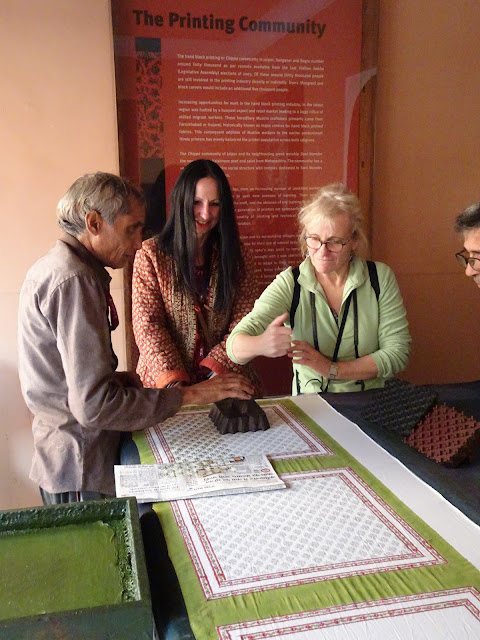Just when you thought Indian architecture couldn't get any more beautiful, feast your eyes on this!
Rising 50 feet above the streets of Jaipur, you'll find the city's most distinctive landmark, the spectacular pink-painted honeycombed hive that is the Hawa Mahal, the Palace of the Winds. Built in 1799 by Maharajah Sawai Pratap Singh, the Mahal was an extension of the City Palace, enabling the women of the royal household to watch city life through the 953 (yes, really!) windows without being seen by the public, thus remaining in purdah.
Rising 50 feet above the streets of Jaipur, you'll find the city's most distinctive landmark, the spectacular pink-painted honeycombed hive that is the Hawa Mahal, the Palace of the Winds. Built in 1799 by Maharajah Sawai Pratap Singh, the Mahal was an extension of the City Palace, enabling the women of the royal household to watch city life through the 953 (yes, really!) windows without being seen by the public, thus remaining in purdah.
 |
| Maharajah Sawai Pratap Singh |
More incredible doorways!
The pink and red Hawa Mahal is the tallest building in the world not to have foundations, managing to stay upright because of both its curved shape and the 87° angle at which it is built. Mughal architecture is not only beautiful, it's mind-bendingly clever, too.
There's a small museum inside the Hawa Mahal with miniature paintings and ceremonial armour on display.
The top three floors (known as Vichitra Mandir, Prakash Mandir and Hawa Mandir) are just a single room wide. The narrow corridors can get extremely crowded, claustrophobics beware!
Despite the Hawa Mahal being five storeys tall there are no steps to the upper floors, instead you'll find ramps which allowed for the royal ladies to be transported by palanquins (similar to a sedan chair).
Ratan Mandir, on the second floor, has the most beautifully coloured glass windows, they've got an 1960s vibe to them despite them being installed in 1799.
Each of the casement windows have miniature windows and carved sandstone grills, finials and domes, giving the appearance of a mass of semi-octagonal bays, giving the Mahal its unique façade and offering a tantalising glimpse of life outside the palace to both the royal ladies of the Eighteenth century, and us commoners.
The nine-hundred and fifty-three windows allow for a cool breeze to blow through the Mahal (which explains why it's called the Palace of the Winds), keeping it cool and airy and perfect for Jaipur's sizzling Summer temperature.
After a gap of fifty years, renovation work on Hawa Mahal took place in 2006, at an estimated cost of Rs 4568 million (£49 million) which was shared between the Indian government and corporate business.
The palace's architectural heritage is a fusion of Hindu Rajput and Islamic Mughal; the Rajput style is seen in the form of domed canopies, fluted pillars, lotus and floral patterns, and the Islamic style as evident in its stone inlay filigree work and arches (similar to those seen at Fatehpur Sikri).
Maharajah Pratap Singh used to worship Lord Krishna on this storey, known as Vichitra Mandir, and wrote poems in devotion. The shape of Hawa Mahal is built to resemble Krishna's crown.
The perfect spot for a selfie.
Look at this regal beauty! Her family requested that we pose for pictures so we asked for a photo of their little princess in return.
Another fabulous doorway.
Hawa Mahal is a hugely popular tourist attraction so get there early.
Open daily from 9am - 5.30 pm
Indian/Foreigner admission price: 50 rupees/200 rupees







































































